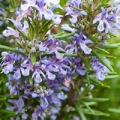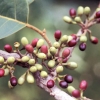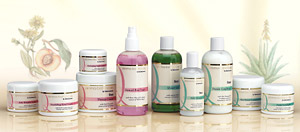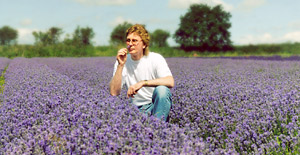Clary Sage Essential Oil Induces Relaxation – Controlled Trial
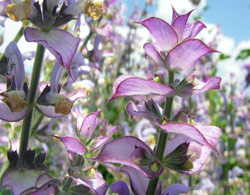 Whilst investigating the comparative efficacy of inhaled clary sage essential oil and lavender essential oil for reducing stress on females with urinary incontinence, researchers made a surprising discovery. Whilst far from conclusive, the results of this study are certainly interesting and may encourage further research along similar lines.
Whilst investigating the comparative efficacy of inhaled clary sage essential oil and lavender essential oil for reducing stress on females with urinary incontinence, researchers made a surprising discovery. Whilst far from conclusive, the results of this study are certainly interesting and may encourage further research along similar lines.
********************************************************
Objectives
The aim of this study was to investigate the effect of inhalation of clary sage essential oil (Salvia sclarea) or lavender essential oil (Lavandula angustifolia) vapors on autonomic nervous system activity in female patients with urinary incontinence, undergoing urodynamic assessment.
Study design, location, and subjects
This study was a double-blind, randomized, controlled trial carried out in 34 female patients with urinary incontinence.
Outcome measure
The subjects were randomized to inhale lavender, clary, or almond (control) oils at concentrations of 5% (vol/vol) each. Systolic blood pressure, diastolic blood pressure, pulse rate, respiratory rate, and salivary cortisol were measured before and after inhalation of these odors for 60 minutes.
Results
The clary sage essential oil group experienced a significant decrease in systolic blood pressure compared with the control (p=0.048) and lavender oil (p=0.026) groups, a significant decrease in diastolic blood pressure compared with the lavender oil group (p=0.034) and a significant decrease in respiratory rate compared with the control group (p<0.001)
In contrast, the lavender oil group tended to increase systolic and diastolic blood pressure compared with the control group. Compared with the control group, inhalation of lavender oil (p=0.045) and clary oil (p
Conclusions
These results suggest that lavender essential oil inhalation may be inappropriate in lowering stress during urodynamic examinations, despite its antistress effects, while clary sage essential oil inhalation may be useful in inducing relaxation in female urinary incontinence patients undergoing urodynamic assessments.
Copyright © Geun Hee Seol, Yun Hee Lee, Purum Kang, Ji Hye You, Mira Park, Sun Seek Min 2013. 1 Department of Basic Nursing Science, School of Nursing, Korea University, Seoul, Republic of Korea.
Journal of alternative and complementary medicine (New York, N.Y.) (impact factor: 1.69). 01/2013; DOI:10.1089/acm.2012.0148

